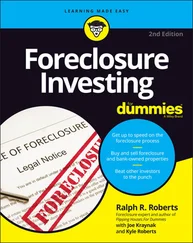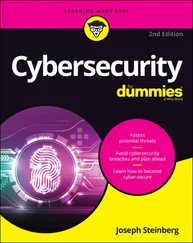 Keeping track of life
Keeping track of life
 Posting the grades
Posting the grades
During adolescence, your kids’ hormones go wild, and your kids fight for independence — at the same time that they still secretly sleep with teddy bears. Adolescents begin to think on a semi-adult level, and they’re a joy to engage in conversation. For perhaps the first time, they not only have opinions, but they can defend those opinions with somewhat rational thought. If this is the picture that you look at over the breakfast table each morning, you have a junior high student.
Junior high school or middle school in many communities is the between time. Too old for elementary school, yet not tall enough for high school classes, junior high students spend much of their time sitting through classes that attempt to catch students up and fill in any gaps before high school. If you can grin at their quirks, appreciate a developing sense of humor, and accept some friendly criticism without losing your cool, you’ll love homeschooling your middle grades students.
It’s not unusual to begin homeschooling in the middle years, especially if behavior or less-than-expected school achievement sends up a warning flag to concerned parents. Some students jump at the chance to be removed from what they see as a no-win situation. Others may fret when you remove them from the social arena that concerns you.
 You may want to spend a few weeks getting used to the new schedule before you dive back into the books, especially if you remove a junior high student from the middle of a school year. Older students don’t adapt quite as quickly as younger ones, and the change in programming may throw a student for a bit. Although you don’t necessarily want your student spending all her free time playing video games, you may need to allow some detoxification time so that she has the emotional energy to respond to you after you begin classes at home. If you begin at the start of a school year, your student already has several weeks away from the system, so it’s not as big of a deal. For ideas on how to handle a new middle-grade homeschooler those first few weeks or months, see Chapter 4.
You may want to spend a few weeks getting used to the new schedule before you dive back into the books, especially if you remove a junior high student from the middle of a school year. Older students don’t adapt quite as quickly as younger ones, and the change in programming may throw a student for a bit. Although you don’t necessarily want your student spending all her free time playing video games, you may need to allow some detoxification time so that she has the emotional energy to respond to you after you begin classes at home. If you begin at the start of a school year, your student already has several weeks away from the system, so it’s not as big of a deal. For ideas on how to handle a new middle-grade homeschooler those first few weeks or months, see Chapter 4.
Junior high students who school at home explore many more opportunities than their friends at school, simply because they have more time available to pursue activities. (See Chapter 26for more information about socializing.) Although a public- or private-schooled junior high student spends the days at school and perhaps evenings at sports practice, homeschooled students can arrange their school time to
Participate in community plays
Volunteer at the library or local animal shelter
Start a home business, whether it’s babysitting, the gift basket biz, or another creative endeavor
Participate in community or competitive sports (such as ice skating, which takes hours of practice for truly competitive skill)
LOCATING CURRICULUM OPTIONS
After you bring your child home, what do you teach? You have loads of options, and only time and money limit your choices. Because nobody has an endless supply of either of these (I know I wish I did!), by balancing the two, you can devise a pretty good curriculum that meets the needs of your student.
All of Part 3looks at different ways that you can teach your child. You can purchase a full curriculum from an existing school and let that school form a protective umbrella over your homeschool. Maybe you want to write a curriculum on your own. Perhaps you’d rather pull various books from a whole bunch of publishers like the schools do.
No matter how you think homeschooling should be done, Part 3starts you on your way. Also look at Chapter 6, which lists elementary level curriculums — most of them go through grade 8.
And that’s only a quick list. Look around your own community for opportunities for these students. They generally love to help and want to feel needed. Plugging them into some type of community effort fills both those desires with a special activity or two.
So now your middle schooler is at home and you realize that you need to track everything she’s doing. When you start to think about the volunteering and other activities that actually carry educational worth, putting it all on paper becomes a bit overwhelming. Even if your state doesn’t require it (see Chapter 3), tracking your middle schooler’s courses and activities gives you great practice for the high school years, when transcripts become all important.
Start with the basics:
What subjects does your state require? Math, English, science, and social studies usually begin the list.
What subjects do you think your student needs to learn? Combining these subjects with the ones from the previous bullet gives you a nice, round group of classes.
What are your student’s outside pursuits?Does he participate on a traveling soccer team? Write it down under physical education or fitness. Did he set up a home business last year? Great — you have to keep track of the money, which is math, and keep the process rolling, which requires general business knowledge.Some activities, such as time spent at the local animal shelter, may simply fall under “volunteer activities” unless your teen gleans some animal science knowledge along the way. (Then, of course, it takes its place beside the weekly science text on your planning pages.)
If your middle schooler tackles a subject early, such as Algebra 1 in seventh or eighth grade instead of waiting for high school, it still counts as a high school course. Be sure to keep track of dates and grades for any early high school classes, even though they don’t end up on the high school transcript.
 Although I know you want to list Every Single High School Level Class your child ever took, if those courses take place before ninth grade, transcript readers like college admissions departments don’t want to see them. (I know. I’m sorry. I don’t make the rules.) If your child takes Algebra 1 in grade 7 and Geometry in grade 8, then the ninth grade high school transcript will begin with Algebra 2. Earlier courses are assumed. Same with foreign language. If you do Italian 1 in middle school, then Italian 2 starts off the high school foreign language list. (Be aware, however, that if you do this, the foreign language cops do expect to see at least two years of that language on the high school transcript, preferably three.)
Although I know you want to list Every Single High School Level Class your child ever took, if those courses take place before ninth grade, transcript readers like college admissions departments don’t want to see them. (I know. I’m sorry. I don’t make the rules.) If your child takes Algebra 1 in grade 7 and Geometry in grade 8, then the ninth grade high school transcript will begin with Algebra 2. Earlier courses are assumed. Same with foreign language. If you do Italian 1 in middle school, then Italian 2 starts off the high school foreign language list. (Be aware, however, that if you do this, the foreign language cops do expect to see at least two years of that language on the high school transcript, preferably three.)
 For additional guidance in homeschool organization, turn to Chapters 23and 24. These chapters discuss testing, portfolios, scheduling, and daily planning. You may want to consider a computer-based planning system if you want to cut down on overall paperwork and still keep a hand on planned activities.
For additional guidance in homeschool organization, turn to Chapters 23and 24. These chapters discuss testing, portfolios, scheduling, and daily planning. You may want to consider a computer-based planning system if you want to cut down on overall paperwork and still keep a hand on planned activities.
Putting Grades to the Test
If your child moves into the middle years with some homeschool time under his belt, then he may have little experience with grades. On the other hand, if you bring your child home to school during middle school, grades may be a painful reminder of the past. Even if you never graded work before, these junior high years are a good time to start.
Читать дальше

 Keeping track of life
Keeping track of life You may want to spend a few weeks getting used to the new schedule before you dive back into the books, especially if you remove a junior high student from the middle of a school year. Older students don’t adapt quite as quickly as younger ones, and the change in programming may throw a student for a bit. Although you don’t necessarily want your student spending all her free time playing video games, you may need to allow some detoxification time so that she has the emotional energy to respond to you after you begin classes at home. If you begin at the start of a school year, your student already has several weeks away from the system, so it’s not as big of a deal. For ideas on how to handle a new middle-grade homeschooler those first few weeks or months, see Chapter 4.
You may want to spend a few weeks getting used to the new schedule before you dive back into the books, especially if you remove a junior high student from the middle of a school year. Older students don’t adapt quite as quickly as younger ones, and the change in programming may throw a student for a bit. Although you don’t necessarily want your student spending all her free time playing video games, you may need to allow some detoxification time so that she has the emotional energy to respond to you after you begin classes at home. If you begin at the start of a school year, your student already has several weeks away from the system, so it’s not as big of a deal. For ideas on how to handle a new middle-grade homeschooler those first few weeks or months, see Chapter 4.










